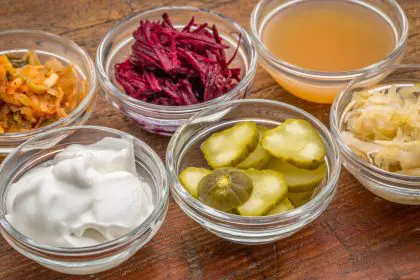Millions of Americans struggle with the burning sensation that creeps up their chest after meals, disrupting sleep and affecting daily life. Chronic heartburn doesn’t have to be a permanent fixture in your routine. A systematic approach focusing on natural remedies can provide lasting relief in just two weeks.
The journey toward digestive comfort begins with understanding what triggers those uncomfortable episodes. Rather than masking symptoms, this comprehensive plan addresses root causes through strategic dietary modifications, timing adjustments, and lifestyle changes that work together to restore balance.
Week one: Foundation building
The first seven days focus on establishing new eating patterns that support optimal digestion. Portion control plays a crucial role, as smaller meals reduce pressure on the lower esophageal sphincter, the muscle responsible for keeping stomach acid where it belongs.
Creating a food diary during this initial phase helps identify personal trigger foods. Common culprits include citrus fruits, tomatoes, chocolate, mint, garlic, onions, and spicy dishes. However, individual responses vary significantly, making personal tracking essential for long-term success.
Meal timing becomes equally important. Eating the largest meal at lunch rather than dinner allows more time for proper digestion before lying down. The final meal of the day should occur at least three hours before bedtime, giving the stomach adequate emptying time.
Water consumption requires strategic planning. While staying hydrated remains important, drinking large amounts during meals can dilute digestive enzymes and increase stomach volume. Instead, focus on hydration between meals, with small sips during eating if needed.
Alkaline foods become staples during this foundation week. Bananas, melons, oatmeal, green vegetables, and lean proteins help neutralize excess acid production. These foods also provide essential nutrients that support overall digestive health.
Day-by-day meal restructuring
The second week introduces more specific meal planning strategies. Breakfast becomes the most substantial meal, providing energy for the day while taking advantage of optimal digestive function in the morning hours.
- Monday through Wednesday focus on incorporating more fiber-rich foods gradually. Sudden increases in fiber can cause digestive discomfort, so adding small amounts of whole grains, vegetables, and fruits allows the system to adjust naturally.
- Thursday and Friday emphasize protein timing and selection. Lean options like fish, poultry, and plant-based proteins digest more easily than fatty red meats. Preparing proteins through baking, grilling, or steaming rather than frying reduces fat content that can trigger symptoms.
- Weekend days allow for testing previously eliminated foods in small quantities. This reintroduction phase helps determine which items can be occasionally enjoyed without causing problems.
Lifestyle modifications that heal
Sleep position significantly impacts nighttime symptoms. Elevating the head of the bed by 6 to 8 inches using blocks or a wedge pillow harnesses gravity to keep stomach contents in place. This adjustment often provides immediate relief for those experiencing nighttime discomfort.
Clothing choices matter more than many realize. Tight belts, waistbands, and restrictive garments increase abdominal pressure, potentially forcing stomach acid upward. Loose-fitting clothes around the midsection eliminate this unnecessary pressure.
Stress management becomes a cornerstone of the healing process. Chronic stress increases acid production and affects digestion timing. Simple techniques like deep breathing exercises, gentle yoga, or short walks after meals can significantly improve symptoms.
The power of natural remedies
Several natural substances provide gentle relief without side effects. Ginger tea consumed 30 minutes before meals stimulates digestion and reduces inflammation. Fresh ginger root can be grated into hot water or incorporated into cooking for ongoing benefits.
Aloe vera juice, when specifically prepared for internal consumption, coats and soothes the esophageal lining. Starting with small amounts allows the body to adjust to this healing substance.
Apple cider vinegar, despite seeming counterintuitive, can help balance stomach acid levels when used correctly. One tablespoon diluted in water before meals may improve digestion for some individuals, though this remedy requires careful monitoring.
Movement and timing strategies
Physical activity plays a vital role in digestive health, but timing matters. Vigorous exercise immediately after eating can worsen symptoms, while gentle movement like walking aids digestion. A 10-minute walk following meals helps food move through the system naturally.
Morning stretches that open the chest and lengthen the spine can improve posture throughout the day. Poor posture compresses the digestive organs and may contribute to acid reflux symptoms.
Week two: Advanced techniques
The second week introduces more sophisticated approaches to digestive healing. Mindful eating practices slow down consumption, allowing proper chewing and enzyme activation. Each bite should be chewed thoroughly, with utensils set down between bites to prevent rushed eating.
Temperature awareness becomes important during this phase. Extremely hot or cold foods and beverages can shock the digestive system. Room temperature or slightly warm options provide comfort without triggering reactions.
Herbal teas replace caffeinated beverages during this period. Chamomile, marshmallow root, and slippery elm create soothing effects on irritated tissues. These gentle remedies can be enjoyed throughout the day without concern.
Creating sustainable habits
Long-term success depends on making permanent lifestyle adjustments rather than temporary fixes. The 14-day plan serves as a foundation for ongoing digestive health, with flexibility to accommodate individual needs and preferences.
Meal planning becomes a valuable tool for maintaining progress. Preparing compatible foods in advance prevents resorting to trigger items during busy periods. Batch cooking digestive-friendly meals ensures consistent nutrition while saving time.
Social situations require strategic planning. Researching restaurant menus beforehand, eating a small snack before events, and focusing on compatible options helps maintain progress without social isolation.
Monitoring progress and adjustments
Daily symptom tracking continues beyond the initial two weeks, helping identify patterns and triggers that may not be immediately obvious. Sleep quality, energy levels, and overall comfort provide additional metrics for measuring improvement.
Individual responses to specific remedies vary, making personal experimentation necessary. What provides relief for one person may not work for another, emphasizing the importance of customizing the approach based on individual results.
The 14-day natural heartburn relief plan offers hope for those seeking alternatives to long-term medication use. By addressing root causes through comprehensive lifestyle changes, many people find lasting comfort and improved quality of life. Patience and consistency with these natural approaches often yield better long-term results than quick fixes, creating sustainable digestive health that lasts well beyond the initial two-week period.














